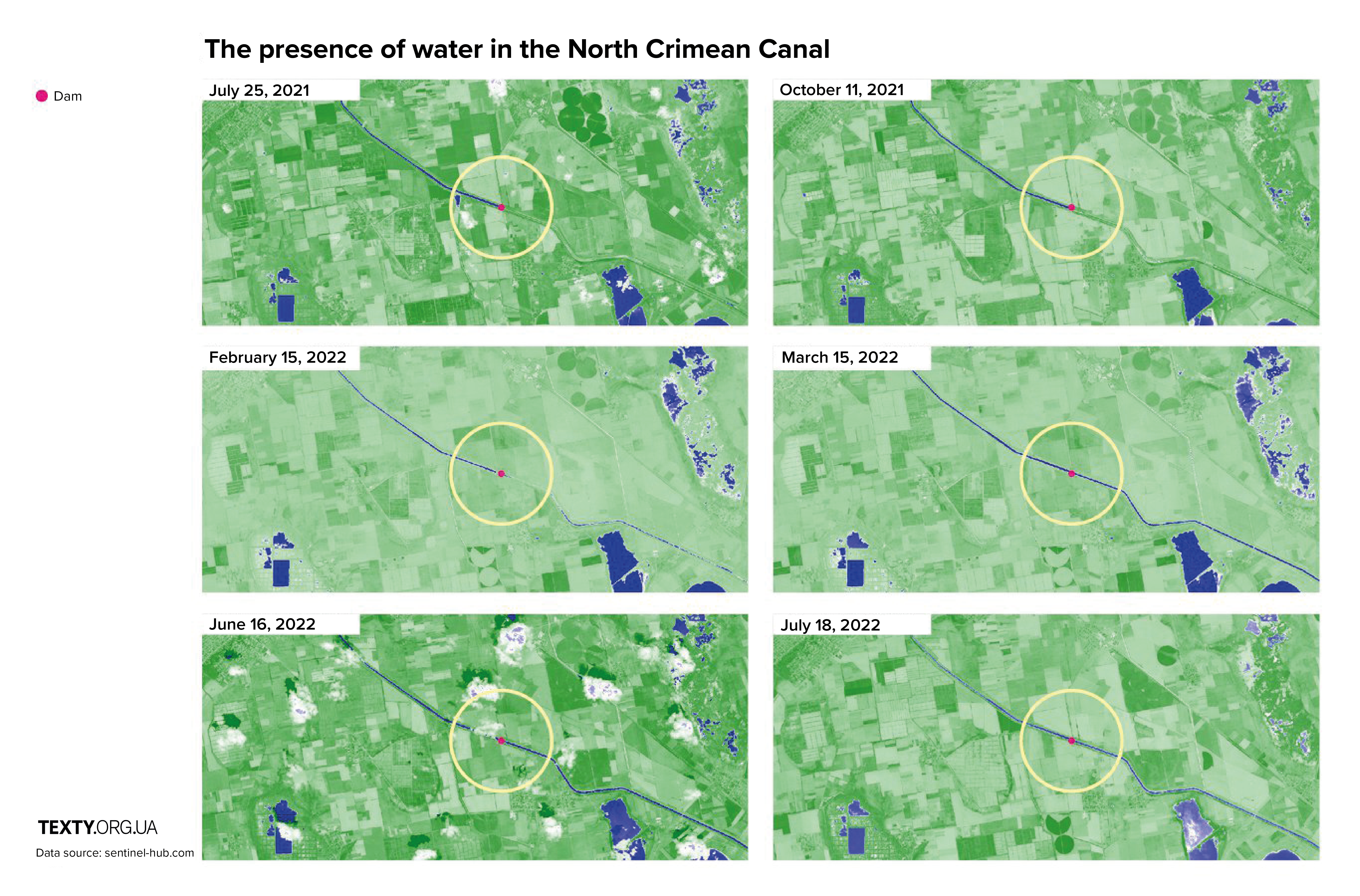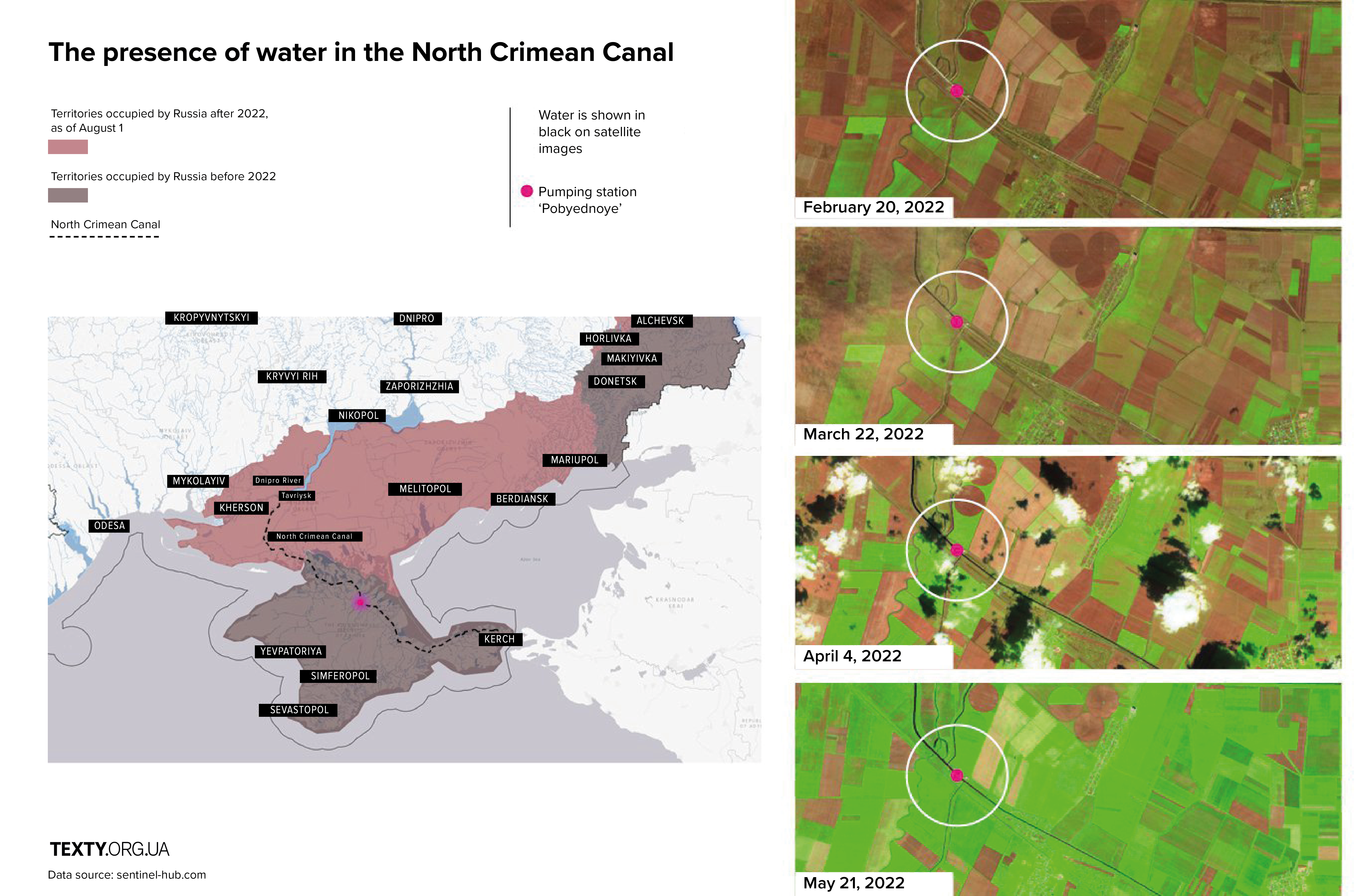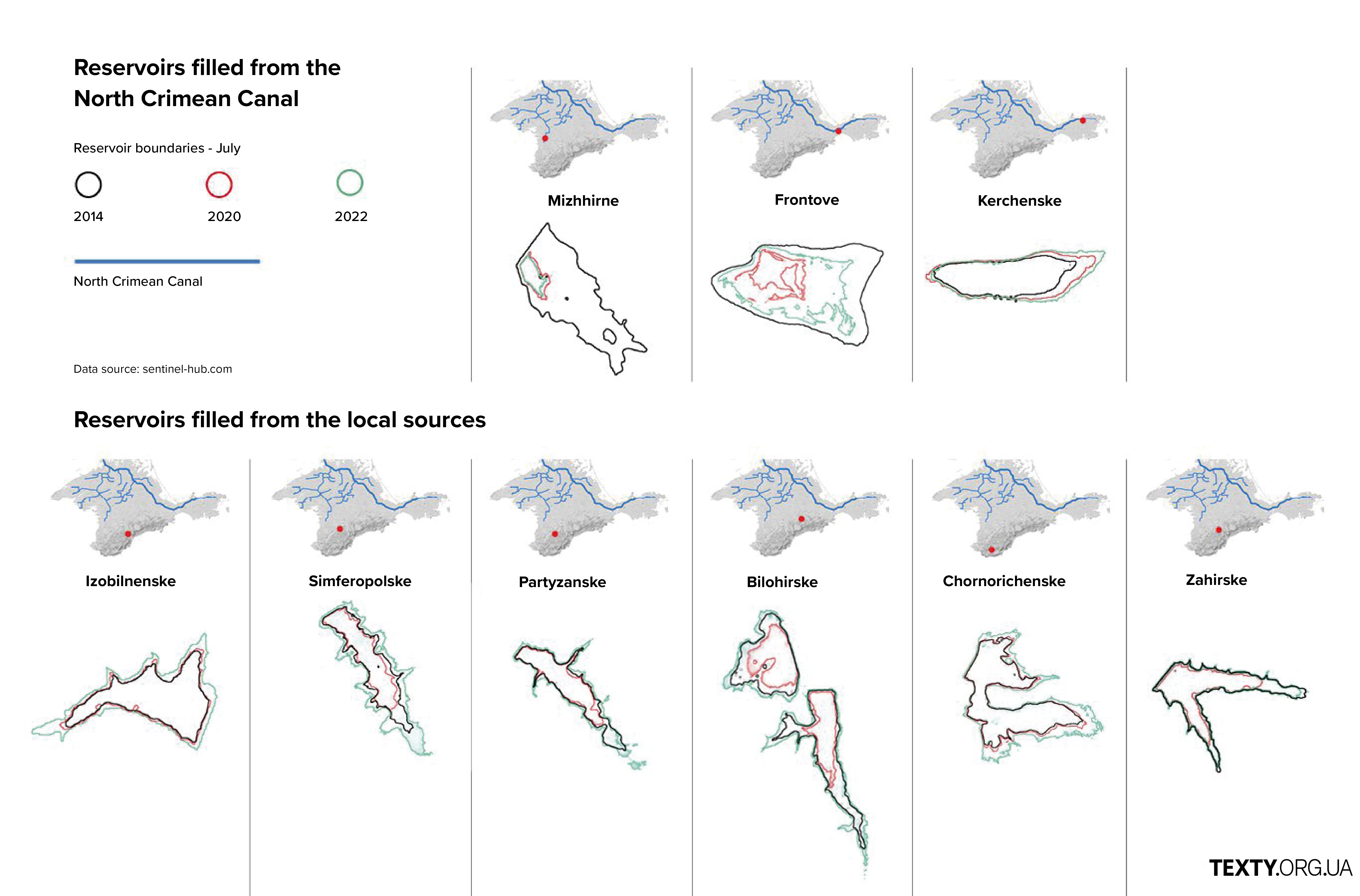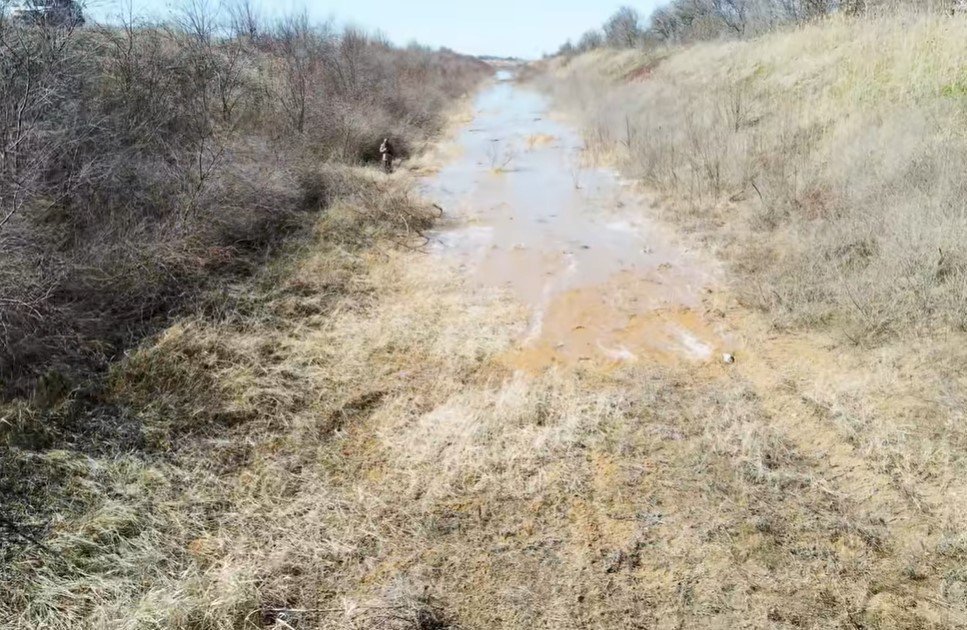Stolen water. How Russian occupiers supply water from the Dnipro River to Crimea, and why the supply is nowhere near enough
Water supply to Crimea became one of Russia’s most impactful propaganda messages to justify its aggression against Ukraine.
It’s worth noting that in 2014, Ukraine stopped the water supply to Crimea through the North Crimean Canal. Previously, the canal covered 80-85% of all the freshwater needs of the peninsula, but it was mostly used for growing rice in the north of Crimea. After the Russian occupation, this business stopped, so the need for water decreased.
However, the slogan "water for Crimea" became a propaganda meme, and Russian occupiers didn’t wait too long to announce the restoration of the water supply – or, more precisely, the beginning of full-scale theft of water from the Dnipro river.
Translated by Dmitry Lytov, Mike Lytov, and Tetiana Sykes
Interestingly, before Russian aggression against mainland Ukraine began, the invaders did not have a consistent agenda regarding the media coverage of the water supply shortage in Crimea. Sometimes they tried to ignore the issue or downplay it, while other times, they admitted that there was a problem and discussed various ways to solve it. On several occasions, fake news about one or another “smart solution” to extract water for Crimea circulated through the media. Sometimes they planned on drilling new wells, and sometimes they forcibly bought out private wells; other times, pipeline troops (these troops exist in Russia) blocked one of the few Crimean rivers and diverted water towards dried-up Crimean reservoirs.
The Russians also developed a "comprehensive plan" to provide Crimea with water at the cost of... 50 billion rubles (about 817 million US dollars). TEXTY, unfortunately, did not manage to learn how the plan was implemented. The Russian media, however, wrote about the plan at the beginning of 2022, claiming it to be currently implemented or even completed. We cannot but wonder which pockets received the money for this project. The Russian reality suggests that this list could be quite long.
In early 2022, it was evident that all efforts to provide Crimea with water were either unsuccessful or had a negligible result. The lack of water was experienced not only in the northern regions of the peninsula but in the Crimean capital as well. In Simferopol, water was supplied on schedule, and water tanks were installed on the streets. The water shortage was felt by Crimeans as far as the southern coast. At the same time, the water quality also deteriorated – local residents complained about brown mud flowing from the tap.
The only thing that made the situation easier was the weather. 2021 was a year marked by strong floods and deluges in Crimea, affecting the south and some cities in the eastern part of the peninsula, particularly Kerch. Russian occupiers even introduced a state of emergency due to these floods. In June 2021, an emergency was also declared in Simferopol district, at the very center of the peninsula.
The water shortage seemed to lose relevance, at least for a while. But everything changed on February 24, the day of Russia’s full-scale invasion of Ukraine. That same day, Russian propaganda media announced the restoration of the water supply to Crimea, allegedly facilitated by the Russian military units. The problem, which they preferred to keep silent about or declared as almost resolved, suddenly turned out to be so urgent that Russians rushed to address it on the very first day of the war.
“The joint use of raid detachments and airborne troops in the Crimean direction ensured the exit of Russian troops to the city of Kherson. This made it possible to unblock the North Crimean Canal and restore water supply to the Crimean Peninsula," said Russia’s chief military spokesman, Igor Konashenkov.
However, Russians lied, as was the case many times before and after. The hoax was obvious even from the statements of Russian collaborators in Crimea. "I ordered... to prepare the North Crimean Canal to receive water," Sergey Aksyonov, the head of the occupation administration of Crimea, wrote on that same February 24, when Russian media was full of headlines saying that the water supply to Crimea had been restored. It was only at the beginning of March that the Russian occupiers finally managed to let the water from the Dnipro into Crimea.

What the occupiers did not expect was that the destruction of the hydrotechnical structures in the Kherson region did not mean that the canal would automatically fill with water throughout Crimea. While water flows by gravity in the Kherson region, the terrain in Crimea is elevated, which requires multiple pumping stations, the first of which is located near the village of Pobyedne (Tarhanlar) in the Dzhankoy district. According to satellite images, as of March 22, the pumping station did not pump any water toward central and southern Crimea. In fact, the presence of water behind the pumping station was recorded only at the beginning of April.

TEXTY also analyzed the network of reservoirs located mainly in the south and east of Crimea, which supplies water to the cities and towns of the peninsula. The entirety of Crimea has mostly relied on them in recent years. Some of these reservoirs are filled naturally with water from local rivers and underground springs. The others receive water from the North Crimean Canal. After the water supply to Crimea was shut off in 2014, tangible problems with water filling arose precisely in those reservoirs that previously received water from the North Crimean Canal. Meanwhile, those receiving water from local sources were hardly affected or changed little in their boundaries.
The analysis of satellite images in 2022 showed an area increase tendency for those reservoirs filled from the Crimean Canal. Although such a tendency was also present in the reservoirs filled from local sources, this can be explained by the gratuitous precipitation of the local weather, taking into account, for example, floods in recent years.

Most importantly, the largest reservoir of Crimea, Mizhhirne near Zhaivoronky (Ibrahim Bay), which used to receive water from the North Crimean Canal, remains as empty as last year. In the past, it partially supplied water to Simferopol and served as a reserve reservoir for Sevastopol. While representatives of the local occupation authorities announced large-scale plans for its reconstruction, those plans only remained on paper, or perhaps the funds for them ended up in someone's pocket.
So, it is still too early to say that the influx of Dnipro water has significantly changed the water balance in the Crimean peninsula. Until now, favorable weather conditions have largely contributed to the water supply.
As for the North Crimean Canal itself and the entire water supply system, we can only guess what condition it was in when the water was released and how much water simply went "into the ground". From the photos and videos showing certain sections of the canal, we can conclude that its foundation was in extremely bad condition, and there was no normal waterproofing. Russian occupiers did not even make an effort to clear the bottom of the canal of vegetation at the time when the water was released, let alone repair the surface. In a video made by one of the Crimean propagandists, we see how the Dnipro river water washes over last year's uncut stubble at the bottom of the canal.

The poor condition of the canal means that water losses during pumping might be very significant. It is also interesting to look at the estimated cost of this water, considering the fact that it is being pumped to Crimea by pumping stations. This makes the stolen water appear to be worth its weight in gold.
For obvious reasons, the Russians will stop at nothing to supply water to Crimea now that the occupied peninsula has become a major transit and support point for waging war on mainland Ukraine. Some troops are transferred to the mainland, and some are returned to rotation. More soldiers and equipment mean a greater need for water. The use of the famous HIMARS by the Ukrainian side will most likely stimulate the "relegation" of the rear communications of the Russians further and further away from the frontline inside Crimea.
In addition, there has been a continuous migration of Russian citizens to Crimea since the beginning of the occupation. An increase in the number of people automatically means an increase in water consumption. As Crimea becomes a "gateway" for further advancement of various representatives of the Russian occupation administration to the Ukrainian south, this tendency for more Russian occupiers to arrive in Crimea can only increase.
In general, if we evaluate Ukraine's losses from Russia’s actions, then according to the calculations of the State Environmental Inspection of Ukraine, the country is losing 32.6 million UAH (883 thousand USD) per day due to the arbitrary use of water resources in Crimea. Overall, the total amount of water stolen by Russian occupiers may now amount to more than 5 billion UAH (135 million USD).
On the other hand, releasing water to Crimea creates one relatively positive trend. Despite the occupation, Crimea and mainland Ukraine have become connected by the blue thread of the Dnipro river once again. The return to the previous water isolation of Crimea will be a crushing defeat for Kremlin propagandists. Their initial argument that Dnipro water was not a real necessity changed after the occupation of southern Ukraine when they announced the release of Dnipro water to Crimea as one of the significant achievements of Russian aggression. Therefore, the destinies of the Ukrainian mainland’s south and Crimea are again strongly intertwined – the liberation of the Kherson region will also mean a first step towards the liberation of Crimea. After that, it will become difficult to cut Crimea off from Ukraine again.

